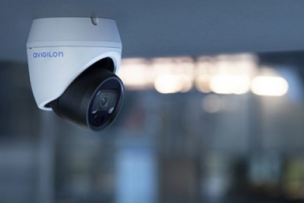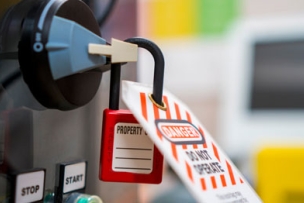Fluke Corporation is the world leader in the manufacture, distribution and service of electronic test tools and software. Founded in 1948, Fluke products empower the manufacturing and service industries with critical testing and troubleshooting capabilities. Fluke has been a trusted test tool partner, helping you and your team work safely with tools that meet or exceed the safety standards of the demanding environments you work in. Get the solutions you need to keep your world up and running with Fluke tools from MSC.
Medical gas leaks in healthcare facilities create serious challenges for maintenance teams. Before you can start detecting leaks in compressed medical gas lines, you need to understand:
- Medical gases, uses and restrictions
- Risks associated with medical gases
- Leak detection restrictions and options
1. Medical gases, uses, and restrictions
Besides healing patients, healthcare facilities are constantly trying to mitigate risk. There are hundreds of variables they need to closely monitor regarding equipment, treatments, supplies, and environmental conditions to protect the patients in their care and protect their employees and visitors.
One of the most critical supplies they must manage and maintain is compressed medical gas. Medical gases are regulated by the US Food and Drug Administration (FDA) as pharmaceuticals, which means they require a prescription for use. They are one of the most frequently administered drugs in the United States, and must be transported, stored, and dispensed under strict standards, which extends to delivery components such as tanks, regulators, and tubing.
The most common medical gases certified for use in medical care include:
- Oxygen: Used for patients who don’t have enough oxygen in their blood due to illness or injury. In large medical facilities, oxygen is typically stored as a liquid in large bulk containers offsite. The liquid is evaporated into a concentrated oxygen supply that is piped throughout the facility through underground pipes. Smaller medical facilities often store oxygen in large tanks in the medical gas storage room and pipe it from there throughout the hospital.
- Nitrogen: Commonly used to power surgical equipment, to freeze and preserve blood, tissue, and other biological specimens, or to destroy diseased tissue in dermatological or cryosurgery applications.
- Nitrous oxide: (also known as “laughing gas”) Used to relieve pain, especially for dental and preoperative procedures.
- Carbon dioxide: Used in laser and laparoscopic surgery and is also combined with oxygen to treat respiratory disorders.
- Helium: Used to treat upper airway obstructions or increased airway resistance to help patients breathe more easily. It is also used in liquefied form to help MRI machines produce high-resolution images without exposing the patient to radiation.
- Medical air: Used primarily in intensive care units (ICU) and with pulmonary nebulizers to reduce the risk of excess oxygen in the lungs and other body tissue while a patient is on a ventilator or during surgical procedures. It is produced by a specialized air compressor that pressurizes clean outside air and supplies it to patient care areas.
- Carbon monoxide: Used in very small amounts in lung diffusion testing to help determine how well a patient’s lungs are exchanging gases.
Many of these individual gases may also be mixed together for other patient diagnostics, to calibrate and maintain medical devices, or in the lab to control the growth of biological cell cultures or tissue.
Some of these gases—particularly oxygen and nitrous oxide—are extremely volatile if present in high enough concentrations outside of controlled applications. So, storage and distribution systems must be closely monitored. The National Fire Protection Association (NFPA) 99 Health Care Facilities Code defines the criteria for inspecting and maintaining medical gas systems and storage to protect the safety of medical staff, patients and visitors.
2. Risks associated with medical gas leaks
Regardless of how medical gas is stored or dispensed, all delivery components must be regularly inspected for leaks. This is especially critical for healthcare staff who work in or around laboratories or operating rooms. A study by The Joint Commission, found that hospital employees working in these areas are more likely to be injured by exposure to medical gases than workers in other areas.
Much of this exposure comes from waste anesthetic gases, which are small amounts of volatile gas that may leak from the anesthetic breathing circuit if the connectors, tubing, and valves are not maintained and tightly connected. Leaks may also occur when the system is being connected and disconnected. The volatility of these gases presents a potential fire hazard, and potential harm to healthcare workers if leaked in enough quantities. Leaked medical gases also contribute greenhouse gases to the environment.
Besides the hazards, medical gas is an expensive line item, so leaks can be costly. Leaks in compressed air supply systems can also waste thousands of dollars a month in energy costs and cause a drop in pressure to the overall system. That loss of pressure can affect the performance of medical instruments or the effective delivery of needed treatments to patients in emergency, intensive care, or surgical situations. To avoid the risk of potential air pressure losses, many healthcare facilities (as well as those in most other industries) oversize their air compressors, which adds further costs to the system.
The good news is that much of this waste can be reduced with a good leak detection system.
3. Leak detection restrictions and options
Finding leaks in compressed air systems is a challenge for many industries. Detecting leaks in compressed medical gas delivery systems adds an additional level of complexity due to the nature of the gases and the challenging environment in which they’re used.





Talk to Us!
Leave a reply
Your email address will not be published. Required fields are marked *